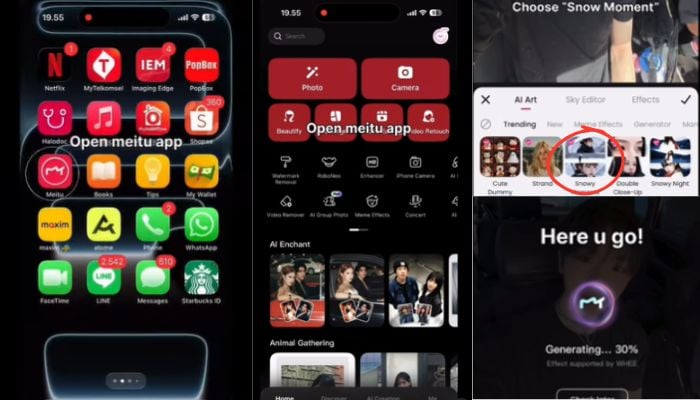After Nano Banana craze, netizens embrace Meitu's AI snow photo trend
Users worldwide are using Chinese AI app Meitu to generate snowy portraits of themselves
November 12, 2025

Following the Nano banana image creation trend, another AI model went viral.
A Chinese app giant Meitu has captured the global attention for its new “AI snow scene” effect where it transforms users’ selfies into dreamy, snow dusted portraits that look hyper realistic.
The AI tool offers a highly stylized beauty shot including enhanced facial features with wonderful cool toned, picturesque snow backgrounds.
The trend of virality is no accident. The developers strategically coincided the launch with the arrival of winter in the Northern Hemisphere, yapping into a collective desire for seasonal aesthetics.
How to create an AI snow image using Meitu app?
- Download and open the Meitu App
- Access the AI snow effect
- Upload your photo
- Let the AI generate the magic
- Save and share your creation
The app only offers 3 days free trial and will be accessible to only paid users afterwards.

How viral trends are fueling reliance on AI image generation
The landscape of digital creation is undergoing a seismic shift, as artificial intelligence rapidly transforms image generation from a skilled craft into an on-demand service, a change being dramatically accelerated by the powerful engine of viral social media trends.
This new era of algorithmic artistry is epitomized by the recent explosion of Meitu's AI snow scene effect.
This app lets users instantly transform their mundane selfies into hazy, snow-covered portraits with an airbrushed finish.
Nevertheless, analysts mark its popularity in applications such as TikTok and Instagram as a short-term trend because it is a potent tool of mass consumption, driven by the fear of missing out (FOMO) and an internal urge to be part of a cultural phenomenon.
The result of this trend-based cycle is the emergence of a physical addiction to this, and AI is becoming the smoothest and most effective route towards social approval.
This dependence has moved well beyond the humble photo filters to advanced text-to-image generators such as Midjourney and DALL-E, in which the basic creative process has ceased to be manual. It has instead been replaced by verbal stimulation.
This convenience, though democratising, has a cost i.e., the loss of underlying visual skills.
The motivation to master complex composition, lighting, or editing effects fades as the option of algorithmic perfection at the press of a button becomes available.
The artistic community has reached the point of symbiosis or dependence.
The future of creative expression, it is argued, will be not of those to whom AI will replace, but of those who learn to use it as an accomplice, and apply its power to supplement, not to replace, human vision and ability.



